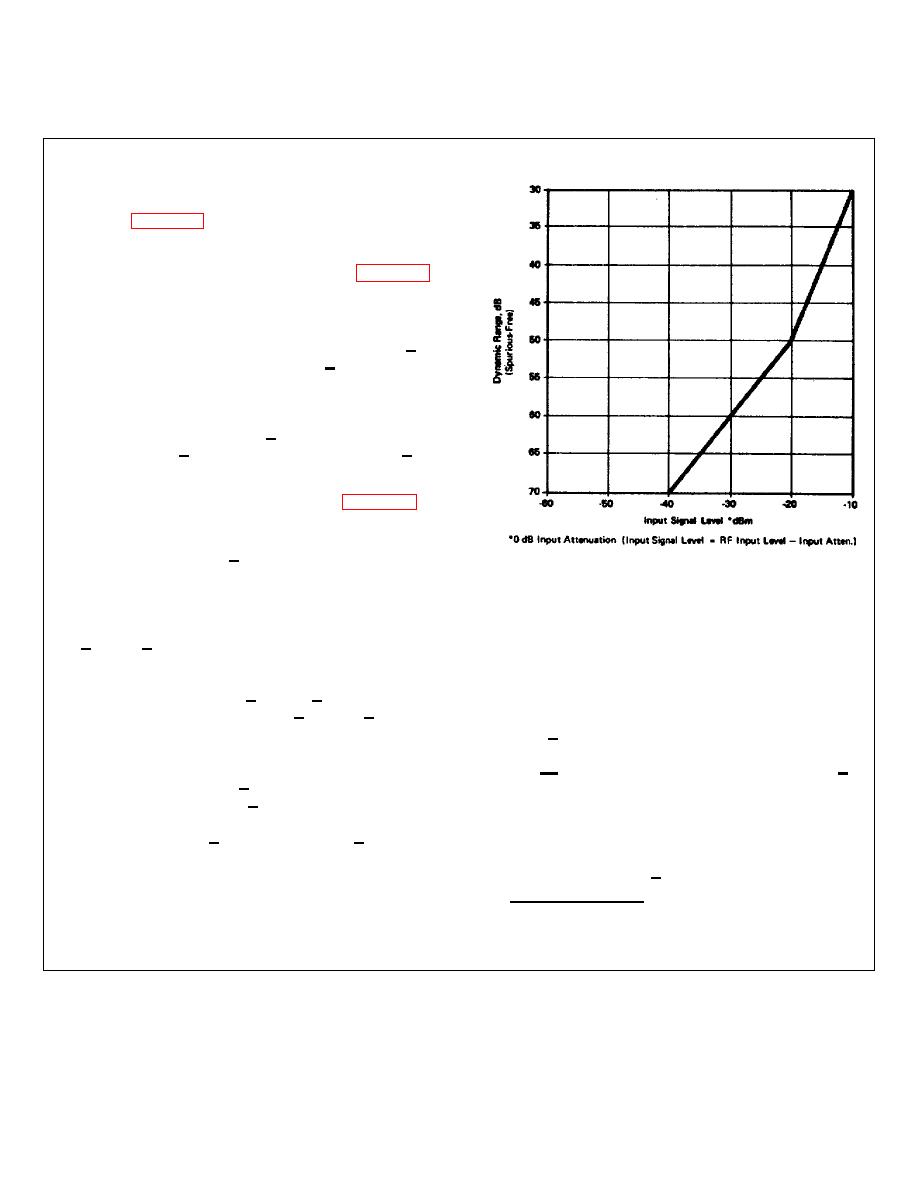
TM 11-6625-2781-14&P-2
Section I
Table 1-2. Supplemental Performance Characteristics (cont'd)
AMPLITUDE CHARACTERISTICS
Video Filter: Averages displayed noise; 10 kHz, 100
Hz, and 10 Hz bandwidths.
The average noise level determines the maximum
sensitivity of the analyzer. For typical noise level
curves see Figure 1-4.
Dynamic Range: For operation from 200 kHz to 110
MHz with other than -40 dBm inputs, see Figure 1-5.
Gain Compression: For -10 dBm signal level tothe
input mixer* gain compression <1 dB.
Third Order Intermodulation Products: Typically >60
dB below input signals separated by <300 Hz.
Amplitude Accuracy:
Measurement Accuracy: Largely determined by
frequency response (+0.5 dB) and display
accuracy (+1.5 dB) for general use. This +2.0
dB can be improved using IF substitution
techniques.
Log Reference Level: Controls provide continuous log
reference levels from +10 dBm to -72 dBm (-2 dBm
below 200 kHz).
Figure 1-5. Typical Dynamic Range
Log Reference Level Control: Provides 70 dB range
RF INPUT CHARACTERISTICS
(60 dB below 200 kHz), in 10 dB steps. Accurate to
+0.2 dB (+2.3%, LINEAR SENSITIVITY).
ohm use matching transformer, such as Anzac
TDN-5350.
Log Reference Level Vernier: Provides continuous 12
dB range. Accurate to +0.1 dB (+1.2%o) in 0, -6,
and -12 dB positions; otherwise +0.25 dB (+2.8%).
input signal:
p<6.0.4 (2.33 SWR) for input attenuation = 0
Log Reference Level, Switching Between 10 dB/div
dB.
and 2 dB/div log scales:
p<0.13 (1.30 SWR) for input attenuation >10
Amplitude Accuracy: +0.6 dB.
dB.
Temperature Stability: +0.07 dB/C.
Attenuator: 0 to 50 dB, in 10 dB increments coupled to
Amplitude Stability: +0.07 dB/C in Log, +0.6o/C in
Log Reference Level indicator automatically
Linear.
maintains absolute calibration.
Attenuator accuracy +0.2 dB.
Display Uncalibrated Light: Warns if a combination of
control settings (IF or video bandwidth; scan width
or scan time) degrades the absolute calibration for
*Signal level at input mixer =
CW signals.
Signal level at RF INPUT - INPUT ATTENUATION
1-6


